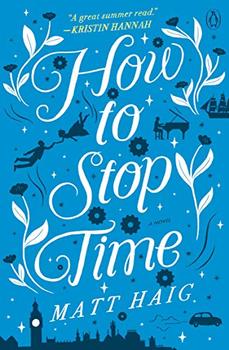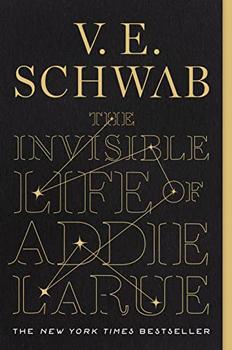Summary | Excerpt | Reviews | Beyond the book | Read-Alikes | Genres & Themes | Author Bio

Tom Hazard, the protagonist of How to Stop Time, is afflicted with a condition of semi-immortality that causes him to age preternaturally slowly. Consequently he is 439 years old when the story begins, and haunted by many ghosts from his past. These ghosts crowd Tom's life and mind, making it difficult for him to form new attachments. He quotes Emily Dickinson while articulating the book's central conflict: "Forever, Emily Dickinson said, is composed of nows. But how do you inhabit the now you are in? How do you stop the ghosts of all the other nows from getting in?" Tom's situation is an exaggerated, supernatural version of a very human dilemma. How does someone effectively move on from the pain and loss of the past? How do you consider giving your heart away to another knowing full well the result could be disastrous?
Of course, Tom is facing a more literal problem. As a member of the Albatross Society, a club formed to protect those who share Tom's condition, Tom is forced to move every eight years and forgo intimate relationships, lest people notice that he barely ages. His most recent move has brought him to (present-day) London, where he is now a high school history teacher. He finds himself drawn to the school's beautiful and tragic French teacher, Camille, but fears for her safety if the Albatross Society learned of their involvement. They have killed before to keep their members' immortality a secret. Furthermore, London brings back a host of difficult memories for Tom. It was to London that he fled after his mother was executed for witchcraft by a mob suspicious of Tom's slow aging, and it was here that he met and lost the love of his life, Rose. While trying to ignore his growing feelings for Camille, Tom searches for his daughter, also preternaturally slow in aging, whom he has not seen for centuries. Chapters alternate between the past and present as Tom narrates formative events from his very long life story.
The love story aspect of the novel is not its greatest strength. The French teacher is one-dimensional, and it is never quite clear why Tom is so drawn to her that he would risk both of their lives. The author gives her epilepsy and a dead fiance seemingly just to avoid having the character be a complete cipher, but she has no discernible personality or life outside of her interactions with Tom, and this makes it difficult for the reader to root for this perilous relationship.
For history lovers, however, there is a lot more to admire. In flashbacks to Tom's many former lives, Haig takes readers to Elizabethan London, where Tom evocatively captures his surroundings, "The competing shouts and cries of traders. The drunken laughter of the ale-sozzled. The grunts and moos and hisses of assorted animals." His description of Richard Burbage, the great English theater actor, provides one of the novel's many comical observations, "He was not an Errol Flynn or a Tyrone Power or a Paul Newman or a Ryan Gosling. If he was on Tinder, he'd be lucky to get a single swipe right." Tom meets F. Scott and Zelda Fitzgerald at a Parisian piano bar in 1928, observes a meeting between Charlie Chaplin and Lillian Gish in Hollywood in 1926, and hears Tchaikovsky perform in New York in 1891.
The author makes some salient points about the dangers of superstitions and biases, and how people who are different are ostracized and oppressed, mainly through Tom's experience in witch-crazy England circa 1599 (See Beyond the Book). Tom fears being killed over his condition if he stays in one place for too long, or worse, having the object of his love killed because of her relationship to him. This can be seen as an allegory for the contemporary LGBTQ+ experience in many places. But there are other fears related to love that everyone contends with as part of the human condition. It's frightening to be vulnerable. But as Tom learns through the course of the novel, the alternative, a life devoid of meaningful relationships, is far scarier. The past does not have to define or determine the present.
![]() This review was originally published in The BookBrowse Review in February 2018, and has been updated for the
July 2019 edition.
Click here to go to this issue.
This review was originally published in The BookBrowse Review in February 2018, and has been updated for the
July 2019 edition.
Click here to go to this issue.

If you liked How to Stop Time, try these:

by Leigh Bardugo
Published 2025
From the #1 New York Times bestselling author Leigh Bardugo comes a spellbinding novel set in the Spanish Golden Age.

The Invisible Life of Addie LaRue
by Victoria E. Schwab
Published 2023
Winner of the 2020 BookBrowse Fiction Award
In the vein of The Time Traveler's Wife and Life After Life, The Invisible Life of Addie LaRue is New York Times bestselling author V. E. Schwab's genre-defying tour de force.
Your guide toexceptional books
BookBrowse seeks out and recommends the best in contemporary fiction and nonfiction—books that not only engage and entertain but also deepen our understanding of ourselves and the world around us.